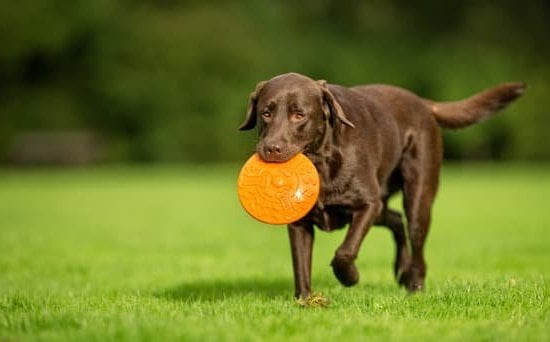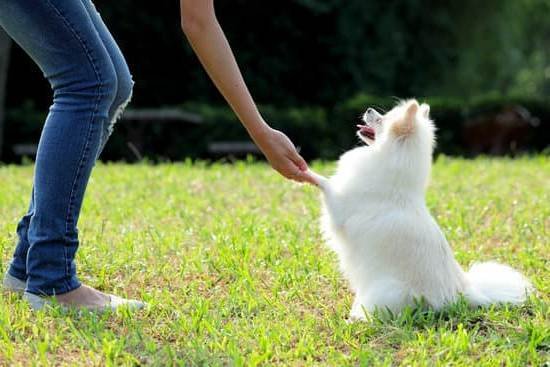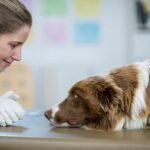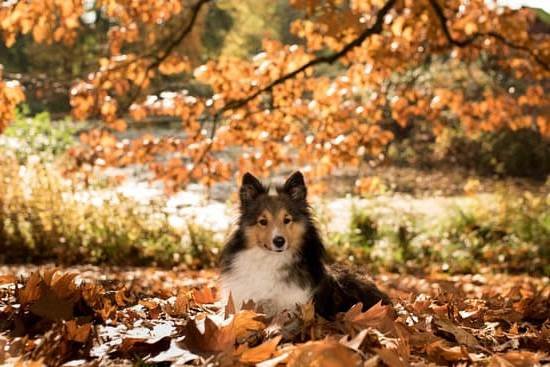Properly training dogs where to pee and poop is a crucial aspect of pet ownership that contributes to the overall happiness and well-being of both the owner and the dog. This introductory section will explore why this training is essential and how it can greatly benefit the lives of both parties involved.
For dog owners, one of the most common challenges they face is managing their pet’s bathroom habits. An untrained dog may relieve itself anywhere in the house, leading to unwanted messes and frustration. On the other hand, a well-trained dog knows exactly where to go, reducing stress for both the owner and the pet.
Training a dog where to pee and poop also plays a significant role in maintaining cleanliness and hygiene within the home. With proper training, owners can create designated toilet areas for their dogs, eliminating any indoor accidents or unsanitary conditions. This not only ensures a clean living environment but also promotes a harmonious relationship between owner and pet.
Furthermore, correctly teaching dogs where to relieve themselves creates a routine that can be incredibly beneficial for their overall well-being. Dogs are creatures of habit, and having set times and places to do their business helps them feel secure and comfortable. It also prevents them from holding it in for too long or experiencing discomfort due to lack of appropriate opportunities.
Understanding Canine Bathroom Behavior
When it comes to training dogs where to pee and poop, it is crucial to have a basic understanding of their bathroom behavior. Dogs have a natural instinct to eliminate waste in specific areas, but they also rely heavily on routine. By recognizing and working with these innate behaviors, you can establish a strong foundation for successful potty training.
The Role of Instinct
Instinct plays a significant role in canine bathroom behavior. Dogs have an inherent desire to keep their living spaces clean, which drives them to find an appropriate area for elimination. This instinct is particularly strong in puppies who learn from their mother and littermates about where to go potty.
As responsible pet owners, we can tap into this instinct by choosing a designated toilet area for our dogs. By providing them with a consistent spot for elimination, we align with their natural desire for cleanliness and help them develop appropriate bathroom habits.
The Power of Routine
In addition to instinct, routine is essential when it comes to effectively training your dog where to pee and poop. Dogs thrive on consistency, so establishing a regular schedule for potty breaks can greatly aid in the training process.
Set specific times throughout the day when you bring your dog to the designated toilet area. This helps condition them to know that they should eliminate during those times. Consistency in routine also helps prevent accidents indoors as your dog becomes accustomed to going outside at predictable intervals.
By understanding and harnessing both instinct and routine, you can begin laying the groundwork for successful potty training with your furry friend. In the next section, we will explore the first step in this process: choosing the right spot for your dog’s toilet area.
Setting the Foundation
One of the first steps in training your dog to pee and poop in a designated area is choosing the right spot for their toilet area. This is an important foundation to set, as it will help establish a routine for your dog and make bathroom training easier and more effective.
When choosing the spot for your dog’s toilet area, there are a few key factors to consider. First, you want to select a location that is easily accessible for both you and your dog. It should be an area that your dog can easily reach without any obstacles or barriers.
Additionally, consider the proximity to your home or living space. You want the toilet area to be conveniently located so that it is easy for you to clean up after your dog.
Another important factor when choosing the right spot is privacy. Dogs, like humans, appreciate some level of privacy when going to the bathroom. Look for an area that provides enough seclusion for your dog to feel comfortable doing their business. This might mean selecting an area in your yard that is shielded by trees or bushes.
Lastly, take into account any potential distractions or hazards in the chosen spot. Dogs can be easily distracted by noise, movement, or even other animals. Try to find a location that minimizes these distractions and ensures that your dog can focus on using their toilet area.
By carefully considering these factors and selecting an appropriate spot for your dog’s toilet area, you are laying the groundwork for successful bathroom training. Remember to be patient with your pup during this process and provide them with positive reinforcement as they start using their designated toilet area.
| Factors | Considerations |
|---|---|
| Accessibility | Choose a location that is easily reachable by both you and your dog. |
| Proximity | Select a spot that is conveniently located near your home or living space. |
| Privacy | Find an area that provides enough seclusion for your dog to feel comfortable. |
| Distractions and Hazards | Avoid spots with potential distractions or hazards that may deter your dog from using the toilet area. |
Creating a Dedicated Space
Creating a comfortable and appealing bathroom environment for your dog is essential in successfully training them where to pee and poop. Dogs, like humans, prefer to have a designated area for their bathroom needs.
This not only provides them with a sense of routine and consistency but also helps prevent accidents inside the house. In this section, we will discuss the importance of creating a dedicated space for your dog’s toilet area and provide you with some tips on how to design it.
- Choose an appropriate location: When selecting the spot for your dog’s bathroom area, consider factors such as convenience, accessibility, and privacy. Ideally, it should be easily accessible for both you and your dog, especially during times when they need to go urgently. Additionally, choose an area that provides some privacy to make your dog feel more comfortable while doing their business.
- Define the boundaries: Once you have chosen the location, it’s important to clearly define the boundaries of your dog’s bathroom area. This can be done using fencing, landscaping borders, or even designated signs. The physical boundaries will help your dog understand where they are supposed to eliminate.
- Create an inviting atmosphere: Dogs are more likely to use an area that is clean and appealing to them. Keep the space well-maintained by regularly removing waste and cleaning any messes that may occur. Use pet-friendly products that will neutralize odors and discourage your dog from eliminating in other areas of the house.
To enhance the appeal of the bathroom environment, you can add some features that dogs tend to gravitate towards. For instance:
- Place a few toys or chew bones in a designated corner of the bathroom area.
- Provide shade or shelter from extreme weather conditions.
- Consider using natural materials such as mulch or gravel for easy drainage.
By creating a dedicated space that is comfortable and appealing for your dog, you are setting them up for success in their bathroom training journey. Remember to be patient and consistent throughout the process, as it may take some time for your dog to become accustomed to using the designated area.
Step-by-Step Training
Training your dog to use a designated toilet area is an important step in creating a harmonious living environment. By following a step-by-step training process, you can effectively teach your dog to pee and poop in the appropriate spot. Here are some guidelines to help you through the training process:
- Establish Clear Verbal Cues: Dogs respond well to verbal commands, so it’s important to establish clear cues for them to associate with using the designated toilet area. Choose simple and consistent phrases such as “Go potty” or “Do your business.” Use these cues every time you take your dog to the designated spot.
- Create a Regular Schedule: Dogs thrive on routine, so establishing a regular bathroom schedule is essential for successful training. Take your dog to the designated toilet area at specific times throughout the day, such as first thing in the morning, after meals, and before bed. Consistency is key in reinforcing good bathroom habits.
- Use Leash Guidance: During the training process, keep your dog on a leash when taking them to their designated toileting spot. This helps guide them directly to where they’re supposed to go and prevents any distractions or wandering off.
- Positive Reinforcement: Rewarding your dog with praise and treats is an effective way to motivate them during training. As soon as they eliminate in the designated area, offer plenty of verbal praise and give them a treat immediately after they finish. This positive reinforcement will reinforce that using the appropriate toilet area is a desirable behavior.
- Patience and Consistency: Training your dog to use the designated toilet area may take time and patience, especially for younger puppies or rescue dogs who haven’t had previous training. Stay consistent with your schedule, cues, and reinforcement techniques. Be patient with accidents along the way and avoid punishment that could hinder progress.
By following these steps, you can successfully train your dog to use their designated toilet area consistently. Remember to maintain a positive and patient attitude throughout the training process. In the next section, we will discuss reinforcement techniques that will further encourage good bathroom habits.
Reinforcement Techniques
Positive reinforcement is an effective technique to encourage good bathroom habits in dogs. By rewarding your furry friend for going to the bathroom in the designated toilet area, you can reinforce their desired behavior and motivate them to continue using the appropriate spot. This section will explore various reinforcement techniques that can be used during the training process.
One of the most commonly used forms of positive reinforcement is treats. When your dog successfully goes to the bathroom in the designated toilet area, immediately reward them with a small, tasty treat.
This creates a positive association with using that specific spot and encourages them to repeat the behavior in order to receive more treats. It is important to choose treats that are appealing to your dog and reserve them exclusively for bathroom training purposes, as this adds value and motivation.
Another form of reinforcement that can be utilized is praise and petting. Dogs thrive on attention and affection from their owners, so giving verbal praise or patting them enthusiastically when they use the designated toilet area can be highly rewarding for them. Your words and touch convey approval, making them feel proud and motivated to continue exhibiting good bathroom habits.
Consistency is key in implementing reinforcement techniques. Make sure you consistently reward your dog every time they go to the bathroom in the right place during the training period. Gradually reduce treat rewards over time as your dog becomes more reliable in using the designated toilet area, but continue offering verbal praise and petting as a consistent form of reinforcement.
| Reinforcement Techniques | Description |
|---|---|
| Treats | Rewarding dogs with tasty treats when they go to the bathroom in the designated spot. |
| Praise and Petting | Offering verbal praise and physical affection as a form of reinforcement when dogs exhibit good bathroom habits. |
Using the combination of treats, praise, and petting can create a positive and rewarding experience for your dog during the training process. Remember to be patient and consistent, as it may take some time for your dog to fully understand and consistently use the designated toilet area.
Troubleshooting Common Challenges
Accidents and regression are common challenges that dog owners may face when training their dogs to pee and poop in the designated toilet area. Despite the best efforts, accidents can happen during the training process. It is essential for dog owners to understand why accidents occur and how to address them effectively.
One of the main reasons for accidents is a lack of consistency or supervision. Dogs thrive on routine, so it is important to establish a consistent bathroom schedule and stick to it. This means taking your dog out at the same times every day, especially after meals, playtime, and naps. By providing frequent opportunities for your dog to go outside, you can minimize the chances of accidents occurring indoors.
In some cases, accidents may also be a sign of regression in training. Regression can happen for various reasons, such as changes in environment or routine, medical issues, stress, or anxiety. If your dog starts having accidents after being successfully trained, it is important not to punish them but instead try to identify the underlying cause of the regression. Consulting with a veterinarian or a professional dog trainer may be beneficial in these situations.
| Cause | Solution |
|---|---|
| Lack of consistency | Establish a consistent bathroom schedule and stick to it. |
| Changes in environment or routine | Gradually introduce any changes and provide extra supervision during transitional periods. |
| Medical issues | Consult with a veterinarian to rule out any potential underlying health problems. |
| Stress or anxiety | Identify and address any potential sources of stress or anxiety, providing a calm and supportive environment for your dog. |
By understanding the common causes of accidents and regression, dog owners can take proactive steps to prevent them from happening. With patience, consistency, and proper techniques, most dogs can be successfully trained to use the designated toilet area consistently. Remember to celebrate your dog’s successes and provide positive reinforcement to encourage good bathroom habits.
Preventing Indoor Accidents
Establishing a Regular Feeding Schedule
One of the key strategies to prevent indoor accidents is to establish a regular feeding schedule for your dog. By having consistent meal times, you can predict when your dog will need to eliminate and plan bathroom breaks accordingly. Most dogs will need to relieve themselves shortly after eating, so try to schedule meals at least twice a day. This will help regulate their digestive system and minimize the chances of accidents.
Consistent Supervision and Management
Proper supervision plays a crucial role in preventing indoor accidents. Especially during the initial stages of toilet training, it is important to keep a close eye on your dog and anticipate their needs.
If you notice signs that they may need to eliminate, such as pacing or sniffing around, quickly redirect them to the designated toilet area. Additionally, make sure that your dog is always within sight or confined in a safe and controlled space when you cannot directly supervise them.
Utilizing Crate Training
Crate training can be an effective tool for preventing indoor accidents, especially if you are unable to supervise your dog constantly. Dogs have an instinctual desire to keep their sleeping area clean, so crate training takes advantage of this natural inclination by providing them with a den-like space where they feel secure.
The crate should be small enough for your dog to stand up, turn around, and lie down comfortably but not too spacious that they have room to eliminate inside it. When properly trained, your dog will learn bladder control and hold off until they are let out of the crate for their scheduled bathroom breaks.
By implementing these strategies, you can significantly reduce the chances of indoor accidents during toilet training. Remember that consistency is key throughout this process and patience is necessary as accidents may happen occasionally even with the best precautions in place. With proper guidance and reinforcement techniques, your dog will eventually develop good bathroom habits and understand where they should go to pee and poop.
On-the-Go Solutions
Introduction to On-the-Go Solutions
As a dog owner, it’s important to provide your furry friend with the skills and knowledge to properly relieve themselves in a variety of situations. Training your dog to use public restrooms and outdoor spaces not only promotes good hygiene but also offers convenience and flexibility when traveling or exploring new environments. In this section, we will explore effective strategies to ensure your dog feels comfortable and confident when using unfamiliar toilet areas.
Understanding the Challenges
Training dogs to use public restrooms and outdoor spaces can present some unique challenges. Unlike their designated home toilet area, these locations can be filled with unfamiliar sights, sounds, and smells that may cause anxiety or confusion in your pet. Additionally, there may be different surfaces such as concrete or grass that they are not accustomed to.
Familiarizing Your Dog with Public Restrooms
To start training your dog for public restrooms, it’s crucial to gradually expose them to the new environment. Begin by visiting quiet and less crowded restroom areas where your dog can become familiar with the surroundings without feeling overwhelmed. Use positive reinforcement techniques mentioned earlier in this article to encourage them and make them associate this new experience with something positive.
Successful Transitioning from Indoor Pee Pads
If you have initially trained your dog to use indoor pee pads, transitioning them to outdoor spaces can be challenging but achievable. Start by moving the pee pad closer toward the door leading outside until eventually placing it just outside. Encourage your pup to use the pad when they need relief while slowly making each trip longer until they are comfortable eliminating outdoors exclusively.
Consistency is Key
Consistency is vital when training dogs for on-the-go restroom breaks. Always bring plenty of waste bags and clean up after your pet immediately so that you leave the space as you found it – clean and hygienic. Stick to a regular schedule and take your dog to their designated toilet area at similar times, even when you’re away from home.
By following these on-the-go solutions and maintaining consistency, you can successfully train your dog to use public restrooms and outdoor spaces. Remember that patience, positive reinforcement, and gradual exposure are key in helping your pet adapt to new environments. With proper training, you can enjoy exploring new places with your furry companion while ensuring cleanliness and good hygiene for all.
Maintaining Success
Once you have successfully trained your dog to use the designated toilet area, it is crucial to maintain their good bathroom habits and ensure a clean living environment. This section will provide helpful tips and strategies to help you sustain your dog’s success in using the correct bathroom spot and keep your home sanitary.
- Consistency is key: Continue to reinforce the training by taking your dog to their designated toilet area at regular intervals throughout the day. Consistency will help them maintain good habits and prevent accidents from occurring. It is recommended to establish a routine for bathroom breaks, such as after meals, playtime, or waking up from a nap.
- Regular cleaning: Keeping the designated area clean is essential for maintaining good habits. Remove any waste promptly and disinfect the area regularly to eliminate odors that may attract your dog back to it. Use pet-friendly cleaning products that do not contain any harsh chemicals that could be harmful to your furry friend.
- Supervision and confinement: If you cannot directly supervise your dog, consider confining them in a safe space when you are unable to keep an eye on them. This can be a separate room or a crate with enough space for them to move comfortably. Confined spaces reduce the chances of accidents happening elsewhere in the house and allow you to control their access until they are fully trained.
- Keep a consistent schedule: Dogs thrive on routines, so it is important to maintain a consistent feeding schedule for them. Feeding at regular times will help regulate their bathroom habits, making it easier for you to anticipate when they need to go outside.
By following these guidelines, you can ensure that your dog maintains their good habits and continues using the designated toilet area without any setbacks or accidents in other areas of your home. Remember that patience and consistency are key throughout this process, as every dog learns at their own pace. With time and effort, you can have a harmonious relationship with your furry friend and enjoy a clean living environment.
Conclusion
In conclusion, properly training dogs to pee and poop in designated areas is essential for both owner and pet happiness. By understanding canine bathroom behavior, setting the foundation with the right spot, creating a dedicated space, and following step-by-step training techniques, owners can successfully teach their dogs to use a designated toilet area. Reinforcement techniques such as positive rewards help encourage good bathroom habits, while troubleshooting common challenges and implementing prevention strategies minimize unwanted accidents.
Once a well-trained bathroom routine has been established, it is important to celebrate your dog’s success and maintain good habits. By sustaining a clean living environment and consistently reinforcing positive behavior, you can ensure a harmonious relationship with your four-legged friend. It is crucial to remember that accidents and regression may occur from time to time, but with patience and consistency, these challenges can be overcome.
Additionally, training dogs to use public restrooms and outdoor spaces is another aspect of their education that should not be overlooked. With proper on-the-go solutions such as carrying waste bags and using command cues effectively, your dog can learn to use different environments for bathroom purposes.
Ultimately, by investing time and effort into training your dog where to pee and poop, you are not only promoting cleanliness within your home but also fostering a sense of happiness and well-being for both you and your furry companion. So celebrate your dog’s success in mastering their bathroom routine, knowing that you have taken an important step toward building a strong bond based on trust and understanding.

Welcome to the blog! I am a professional dog trainer and have been working with dogs for many years. In this blog, I will be discussing various topics related to dog training, including tips, tricks, and advice. I hope you find this information helpful and informative. Thanks for reading!





